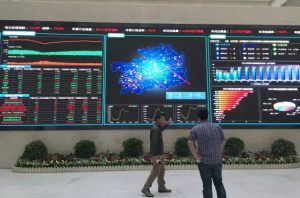With 12.8 TWh of electricity traded in the first five months of 2016 the direct trading platform in the Chinese province Guizhou receives high attention.

Sources and further information with kind recommendations of Azure International.
Being the first pilot for direct electricity trading in China, the platform in Guizhou has been inaugurated in November 2015. It therefore also serves as a first indicator for the liquidity and the acceptation of direct trading platforms in China.
From January through May 2016 a total of 12.75 TWh have been traded between power producers and big industrial consumers. As of now, 943 market participants are registered at the Guizhou platform. For the entire year of 2016 a trading volume of 41.7 TWh has already been agreed on by the users of the platform. This amounts to more than 45 percent of the province’s total electricity sales. The chemical, non-ferrous metal, electronics and equipment industries are the main users of direct electricity trading.
Apparently, direct power trading brought about competition for the generators and electricity prices for large industrial users in Guizhou fell by an average of RMB 0.12/kWh (EUR 0.02/kWh). Until now involved industries were able to cut electricity costs by RMB 1.6 billion (EUR 214.4 million). A considerable decline in power prices could be observed and large power consumers expect a reduction of their costs for electricity of about RMB 6 billion (EUR 804 million) over the course of the year.
It seems that the pilot projects for direct electricity trading offer a vantage for a more fluid power market landscape based on variable prices and increased competition for generators. The decline in power prices also reflects a changing economic playing field for the market participants.



